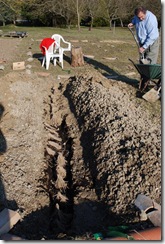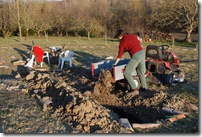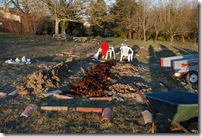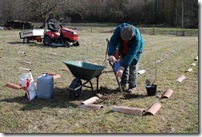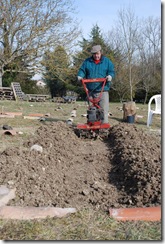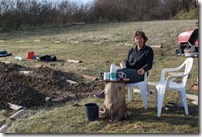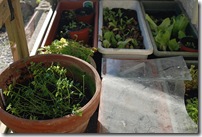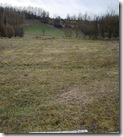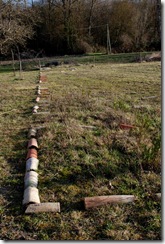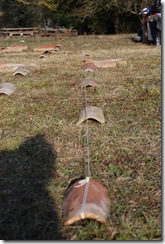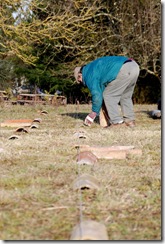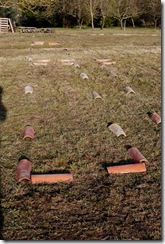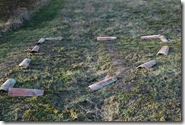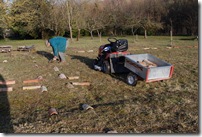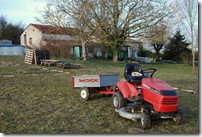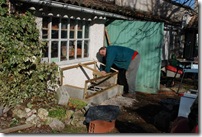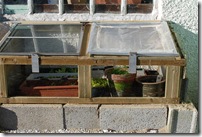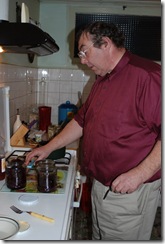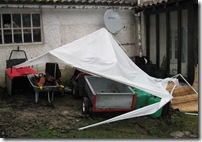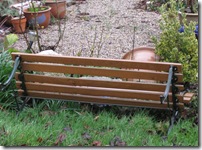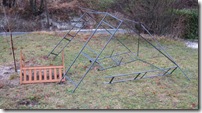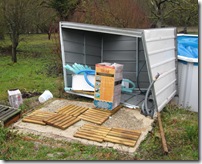Kate and I have spent the past couple of days preparing the new raspberry bed and then planting a single row  of 32 canes.
of 32 canes.
As ever in the garden, we started off with a patch of land that had been wild meadow for the past couple of years. The soil here is chalky clay and very heavy.
The berry beds had already been marked out as part of the earlie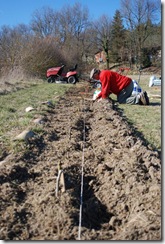 r preparations, 2 beds running north/south, each 7m (23' 6") by 1200mm (4 ft) with a 1m gap between them. I quickly decided that it would be better to use the land as 1 bed 15m long by the 1200mm and so changed the marking. It meant we lost an access into the middle of the vegetable plot but I don't think that matters.
r preparations, 2 beds running north/south, each 7m (23' 6") by 1200mm (4 ft) with a 1m gap between them. I quickly decided that it would be better to use the land as 1 bed 15m long by the 1200mm and so changed the marking. It meant we lost an access into the middle of the vegetable plot but I don't think that matters.
We had already planted a redcurrant bush at the north end of this bed but the change in length made no difference to that.
Next we started to work the soil. Clay that has not been touched for a couple of years takes quite a lot of moving but we decided to use our power rotovator and soon starte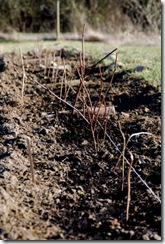 d to break up the surface. We had also decided to turn in the existing grass as a green manure. After several hours of walking up and down the bed following and quietly coaxing the rotovator to work the area I wanted we seemed to be making some progress. I operated the rotovator while Kate wheeled barrow load after barrow load of sand up for me to work in.
d to break up the surface. We had also decided to turn in the existing grass as a green manure. After several hours of walking up and down the bed following and quietly coaxing the rotovator to work the area I wanted we seemed to be making some progress. I operated the rotovator while Kate wheeled barrow load after barrow load of sand up for me to work in.
The composition of the soil improved in front of our eyes as the sand and grass worked it's magic on the heavy clay, and by the end of the day we had a bed with a much lighter and more workable soil composition.
The next day we returned and spent the morning reworking the bed a little more before resetting the rotovator to a narrow setting to allow us to work a deeper trench in the middle. All the time we were adding sand, dry grass and compost to the mix.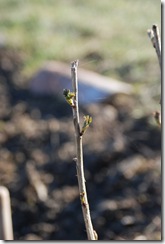
After lunch we laid out the planting of the 32 canes. This involved measuring the position of each cane and then digging a small hole sufficient for the root structure of the individual cane. Once the canes were set in the hole to the right height the hole was filled with a good compost to give the canes somewhere to start their new life. The canes were placed 400mm (16") apart.
Once all 32 had been planted we simply cut the canes, where necessary, back to 300mm (12") above the ground and finally spread a well rotted manure and compost mix in between the plants as a top dressing.

